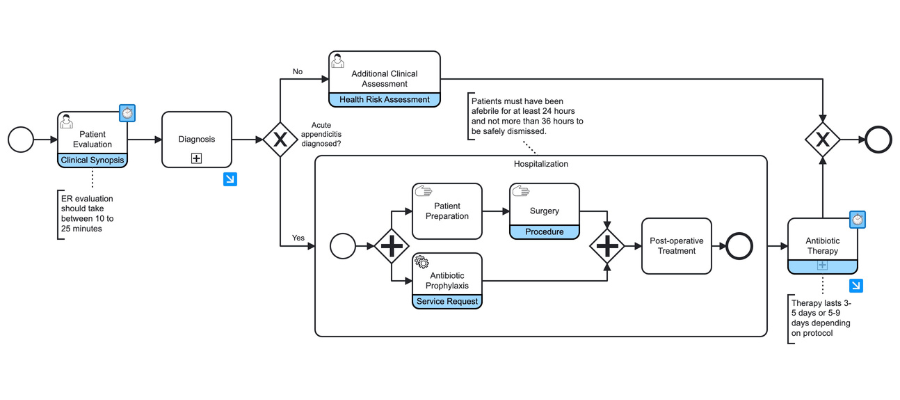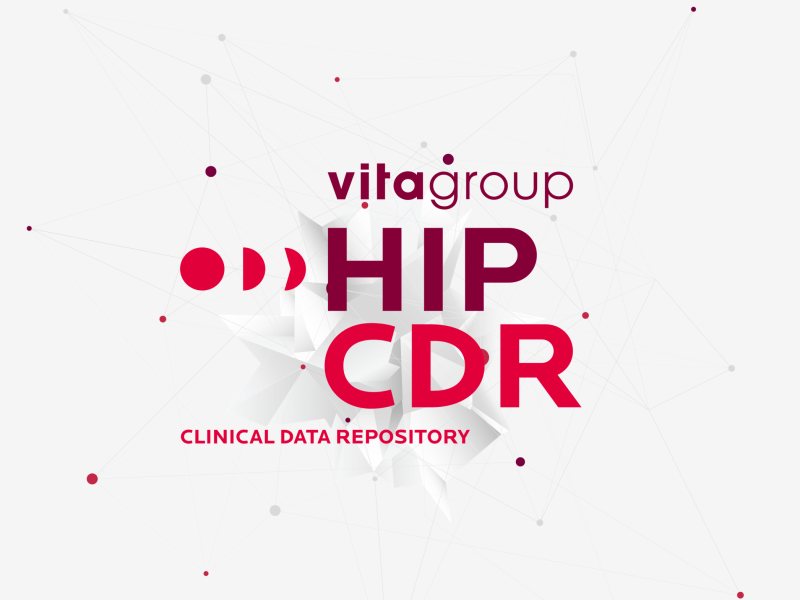free to use & open source

EHRbase is an open source software backend for clinical application systems and electronic health records. EHRbase strives to give organizations a modern, standard-compliant and bedrock-solid foundation for their mission critical business operations and their next generation eHealth solutions. All services are accessible through the official openEHR REST API, including endpoints for the Archetype Query Language.
Main contributors are German health IT company vitagroup, ADOC Software Development Co. and Peter L. Reichertz Institute for Medical Informatics (Hannover Medical School).Find more about EHRbase here.
technology
Java 11, Postgres 11, Spring Boot, JOOQ
Platform
all
resources
Project
website
EHRbase
Support
Documentation

EHRServer is an open source, service‐oriented, openEHR clinical data repository. It provides a secure REST API to store and query clinical data in many ways, supporting standard formats like JSON and XML, that are easy to integrate with any front‐end application. Data queries can be created via the Administrative User Interface, with the powerful and easy to use EHRServer Query Builder. EHRServer complies with the openEHR specifications , leveraging the openEHR Information Model and the Dual Modeling methodology, using standard Archetypes and Templates.
Sample EMRs
EHRCommitter
cabolabs-emrapp
OPT Toolkit
openEHR-OPT
EHRServer clients
EHRClientPHP
cabolabs-ehrserver-js
cabolabs-ehrserver-groovy
technology
Grails, Groovy, Java, PHP, JavaScript
platform
all
resources
EHRServer

EtherCIS (Ethereal Clinical Information System) is an Open Source platform compatible with the openEHR standard. It is designed to allow simple interactions with clients using RESTful API and persist clinical data in a separate DB engine. (more).
technology
Java, Postgres
platform
all
resources
Project website
Ether
CIS
commercial

![]()
Better Platform is a big-data, high-performance solution designed to store, manage, query, retrieve and exchange structured electronic health record data based on the latest release of openEHR specifications. All clinical information is stored in vendor-independent archetypes and templates, allowing standard data entry and retrieval with terminology-based validation.

An advanced Clinical Data Repository that functions as an inexhaustible source of health data, based on the openEHR specifications.

DIPS EPR is a robust, reliable electronic patient record system, running 24/7 across the country in 73% of Norwegian hospitals. In fact, five of the seven university hospitals in Norway use DIPS EPR, providing vital functionality to 57,000 professional users.The DIPS EPR systems cover a wide range of products:Electronic Health RecordsNursing documentation and treatment planningIntegrated EPR scanning systemMedication and prescriptionsWorkflow and process managementElectronic Document Interchange (HL7 and XML)Booking and operation theatre management

This web based EHR is using “Better Platform” and “Better OPENeP”. Our innovative modular open source product is Swiss- and tailor-made. You can have it in the cloud or on premise. It’s responsive and usable on any device.

The Health Passport is an innovative solution to store and utilise patient health data in accordance with open standards — with the added benefit of blockchain technology. The platform is designed to empower patients, whilst delivering the following benefits: puts the patient in full control of their health datautilises blockchain technology to ensure privacy and auditabilityavoids vendor lock-in through the adoption of open standardssupports third-party applications on a “Platform As A Service” modelThe platform can be used in general practice, hospitals or in social care, as well as incorporating health data from other sources such as wearables — health monitors and IoT devices. This provides patients with a single, secure point of access to their health information and control over how it is used.Medicalchain’s Health Passport will allow the patient to access their health data all in one place, through their mobile app or web browser.

Orchestrating executable medical workflows with support for openEHR CDR.Clinical pathways, clinical guidelines, clinical protocols, clinical workflows, clinical best practices, task planning, care coordination plans, care pathways, nursing care plans, clinical process modeling, medical process modeling, healthcare practice patterns, plans and decision logic, process and reasoning models,…There are so many different names to describe what these diagrams represent – I call them Medical Flows.
MedicalFlows – Workflows

Select operational templates you wish to use in the same application. Click generate. Wait 10 seconds. Your application is ready. It is a Flutter app that runs on: iOS / iPadOSAndroidweb browserWindows/Ubuntu desktopWhen you change your templates or there is a new releases of major archetypes, you re-run the generator and few seconds later, your applications and forms are rebuilt and ready to use. With NeoEHR, you will get results faster, eliminate usage fees, retain high customization capabilities and full control over the codebase of your solution. 

OceanEHR eHealth platform – Ocean Health Systems’ OceanEHR platform provides a proven, highly available, greatly scalable, completely flexible and standards based environment for a modern (and future-proof) electronic health record. OceanEHR provides a complete platform for building modern applications for any need across the spectrum of health including cloud-based, SAAS and mobile systems.

EHRDB is a database and platform for building healthcare IT solutions with openEHR standards:allows to create a long-term CDR storage for patient records with ability to run AQL queries;fast solution that can be scaled from a single medical organisation to a regional or national level providing high availability and fault tolerance;designed to be scaled horizontally from a single server to a large cluster with multiple nodes;provides a set of tools allowing to create healthcare applications by separating business processes from clinical data;supports running analytics on clinical data at population level.
EHR Docs is a storage for electronic documents which is digitally signed by clinicians:provides a set of services that can be used to create clinical application that implement business processes for working with documents;designed to be scaled horizontally from a single server to a large cluster with multiple nodes level providing high availability and fault tolerance;provides an integration with openEHR CDR to store clinical content
EHR Forms is a WYSIWYG form builder based on openEHR:hides the complexity of clinical documents based on openEHR and decreases development costs;reusable forms, widgets and UI elements between applications;reusable blocks between forms;allows users to create one form for multiple openEHR templates from different templates;allows to use different visual component libraries from third party developers;action concept allows decision support when the user interacts with a user interface
EHR Index is a solution for building fast and high load applications using openEHR platforms:
• provides a fast backend service allowing to build UI with patients lists by combining clinical (openEHR) and business application data from different data sources;
• provides a near real-time synchronization services allowing users to search, sort and aggregate materialized data with minimum workload to EHR and other business application servers.
• allows to process and load historical data from different data sources including openEHR CDR
• allows to perform fast analytics requests on population data from openEHR CDR
EHR Locator is designed to migrate clinical patient data (EHR) between multiple repositories:
• allows to build federated openEHR clinical storage;
• provides information about the location of the medical record (EHR);
• allows to work with multiple clinical data repositories like with single one.


HIP Clinical Data Repository (CDR): Advanced Digital Health Data PlatformHIP CDR is an innovative digital health data platform built on the openEHR framework to store the healthcare data from different sources. It is designed for creating complex, essential data-intensive applications in the healthcare sector. As a fully managed platform, HIP CDR offers comprehensive capabilities in data governance, seamless system integration, and efficient transaction handling, making it a vital resource for healthcare professionals, researchers, healthcare solution developers and municipal system of records and health regions looking for centralized and vendor-neutral data storage Key Features:Health Data Storage: Patient-related health data is stored using EHRbase, open source database for storing clinical data, based on the openEHR specification, allowing structured data to be stored in standardized information models (archetypes)Administrative Data Storage: demographic data, consent, treatment appointments are stored in HL7 FHIR standard (R4)Storage for Binary Data (video and images) based on S3Identity & Access Management based on ID provider Keycloak, that enables federation of user authentication from Active Directory and other common services and mapping to OAuth2 and OpenID Connect (OIDC)Data Integration Engine: HL7 v2 , HL7 FHIR, openEHR integrations with configurable data mappingsAdministration Interface: management of organizations and clients, management of system users and definition of access roles and extension and adaptation of data models (template management)Logging & Audit Trail: IHE integration profile Audit Trail and Node Authentication (ATNA)Multi-Tenancy Capability: HIP CDR enables the simple setup and operation of independent clients based on a strict, data protection-compliant separation of the administrative and clinical data as well as all configuration parameters between the individual clientsSecurity and Audit: Keycloak for standardized authentication and authorization, Federation of user authentication via openID Connect, LDAP, Active Directory, SAML, support for a cross-system single sign-on, support for 2-factor authentication, ATNA audit and system logsPatient Viewer (optional add-on): a UI to view patient data: Patient overview, demographic and organizational information, Patient history, documentsForm Builder (optional add-on): extensive tooling for designing and customizing clinical forms
platform
Linux
HIP CDR

Robust and lightweight openEHR backend for your mission-critical eHealth infrastructures.openEHR core benefits with enterprise featuresIntelligent integration capabilities and APIs for convenient embedding into your solutionsSecure and compliant: ensured by annual penetration testing and automated vulnerability checksResilient and highly scalable: HIP EHRbase was specifically designed to manage the transactional workload of busy environments such as hospital groups or regional and national eHealth infrastructures.Comprehensive operating options: Deploy anywhere: on hardware servers, local machines, virtual machines etc., AWS, Azure, GCP and other Kubernetes-based environments are feasible.

